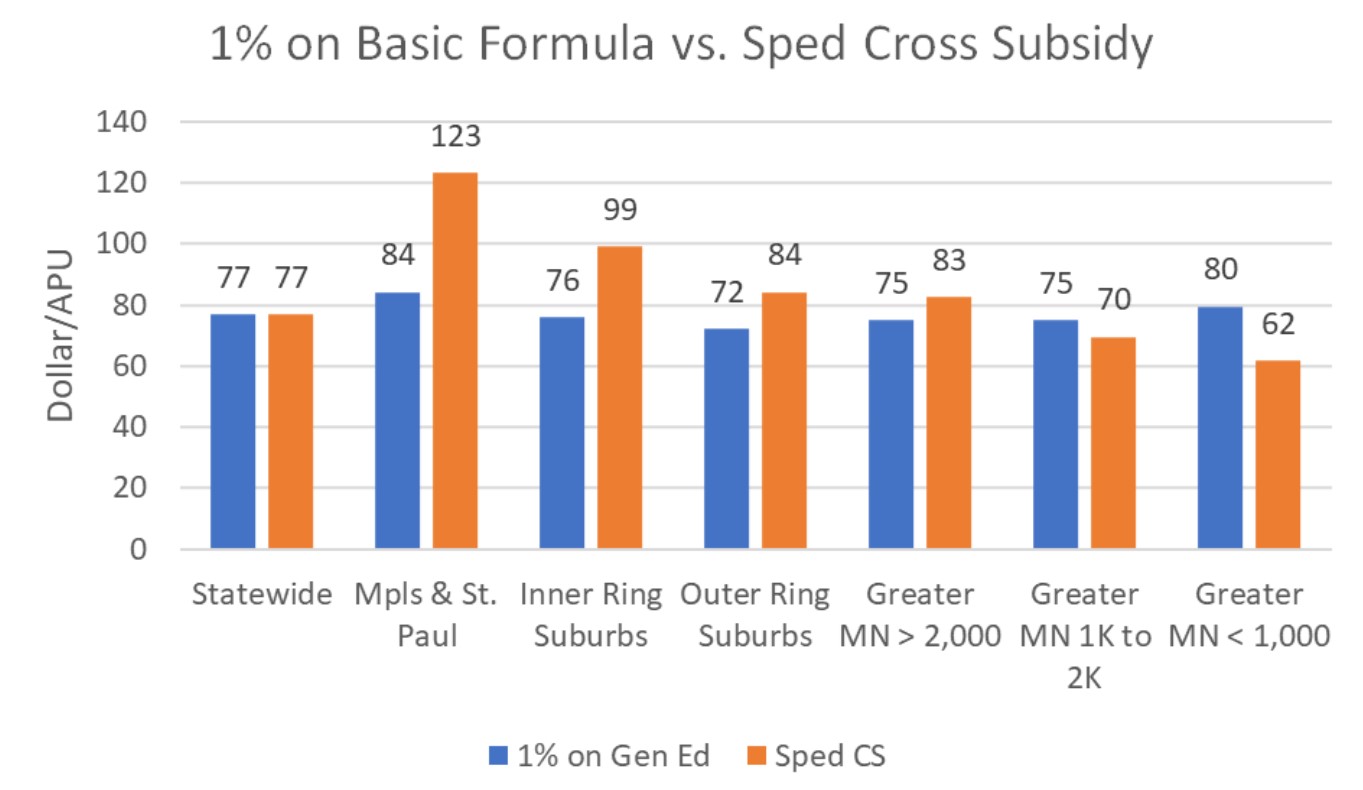Basic Formula Allowance or Special Education Cross Subsidy?
In the 2022 legislative session, many of the educational organizations, including MREA, focused on improving the special education cross subsidy revenue stream. The legislators heard us loud and clear. Although we were close to improving this revenue stream, the legislature did not come to an agreement on educational funding at the end of the session.
On March 6, 2022, MREA published an article on Cross Subsidy and how it affects all districts in the state. On September 30, MREA published an article on how a 1% increase on the basic formula allowance affects each district.
MREA is analyzing how revenue streams affect rural MN districts ahead of setting our legislative priorities for the 2023 session. We want to ensure we’re making informed decisions, while meeting the needs of our members.
Today, MREA will analyze which revenue stream provides the greatest impact for rural schools:
- 1% on the basic formula allowance, or
- that same amount of money on the special education cross subsidy?
MREA developed a map that shows whether it is more beneficial for individual districts to have dollars put on the basic formula allowance or in special education cross subsidy in FY23.
The top half of the districts that did better on Special Education Cross Subsidy are labeled “Much Better,” while the lower half of the districts are labeled “Better.”
Likewise, the top half of the districts that benefited more from 1% on the basic formula allowance are labeled “Much Better” and the lower half “Better.” There are four districts that are neutral – Henning, Proctor, Menahga, and Gibbon-Fairfax-Winthrop.
The data that was used was taking the amount a 1% on the basic formula allowance produces and allocating that out across the state on the special education cross subsidy. When you click on your district, the number to the left tells you how many dollars per pupil your district does better.
There are 123 districts that benefit more from having dollars put on the Special Education Cross Subsidy than putting that same amount of money on a 1% increase in the basic formula allowance. On the flip side, there are 201 districts that benefit more from putting it on a 1% increase in the basic formula allowance.
There are only nine Metro schools – St. Francis, Mounds View, Minnetonka, Fridley, Prior Lake-Savage, Orono, Centennial, Delano, Eden Prairie – that benefit more from a 1% increase on basic formula allowance versus special education cross subsidy. Overall, rural schools benefit more if dollars are put into the basic formula allowance. Of the top 74 districts, only one is in the metro area.
 A different way to show the same data is by state averages. The data still shows that small rural schools do better with an increase in basic formula allowance instead of putting that money on special education cross subsidy. We can see that Minneapolis/St. Paul would benefit greatly by putting the same dollars on special education cross subsidy. The graph above shows that the smaller the average school size is statewide, the more favorable the 1% increase on Basic Formula Allowance is. As districts get larger, Special Education Cross Subsidy becomes more beneficial. Of course, each school has unique circumstances, but there is a definite trend with the size of the school versus which is more beneficial.
A different way to show the same data is by state averages. The data still shows that small rural schools do better with an increase in basic formula allowance instead of putting that money on special education cross subsidy. We can see that Minneapolis/St. Paul would benefit greatly by putting the same dollars on special education cross subsidy. The graph above shows that the smaller the average school size is statewide, the more favorable the 1% increase on Basic Formula Allowance is. As districts get larger, Special Education Cross Subsidy becomes more beneficial. Of course, each school has unique circumstances, but there is a definite trend with the size of the school versus which is more beneficial.
MREA can clearly see many funding streams need upgrades. The special education cross subsidy has been growing in many districts, forcing them to take greater amounts of money from their general fund to pay for this mandated expense. Since 2003, the basic formula allowance has decreased by $925 per pupil when you include inflation. Over the last 20 years, schools have lost over 13% in real buying power because of the basic formula allowance not being properly funded.
MREA continues to fight to have both revenue streams funded at an appropriate level. Given the data above, putting money into the basic formula allowance is generally better than putting that same amount of money on special education cross subsidy for our rural district members.





